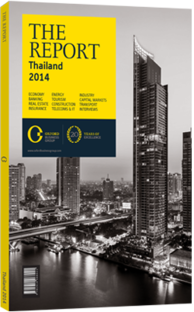Parts of the whole: Bangkok’s public transport system is en route for eventual integration and extensive upgrades
By coordinating its extensive, if fragmented and disjointed, network of buses, underground trains, elevated trains and boats, Bangkok can lay claim to the whole being greater than the sum of the parts, depending upon its degree of success.
The elevated Skytrain is run by the private firm Bangkok Mass Transit System (BTS) Public Company. The underground mass rapid transit (MRT) system is run by the Mass Rapid Transit Authority (MRTA), as are the city’s buses. A mix of public and private companies controls traffic on the Chao Phraya River, which runs through the city. The Airport Rail Link, which is a line that links Suvarnabhumi Airport to the Phaya Thai station in the centre of Bangkok, is operated by the State Railway of Thailand.
Renewed Focus
Chula Sukmanop, the inspector general at the Ministry of Transport, told local press in July 2013, “Our priority right now is to complete the construction of the Bangkok Mass Transit Master Plan as quickly as possible.” The 10 rail lines are due for completion by 2019. Meanwhile, the interim plan includes managing traffic so that vehicles can maintain speeds of at least 16 km per hour at rush hour. “To help, we are planning to re-route all the bus lines to better serve the BMT system – they are a total mess right now,” Sukmanop said. “As part of this plan, we are ordering 3000 new buses, which will be delivered in the next two years.”
Buses carry more than 1m people a day in Bangkok, outnumbered only by private cars. Changing routes to improve connectivity and using new buses may lure some people away from using cars and allow them to rely on public transport more. Additionally, the introduction of bus lanes and BT1bn ($32.7m) worth of traffic cameras to try to curb illegal use of them should help ease traffic flows.
The extensions that are planned for the MRT, BTS and Airport Rail Link will see the network increase from 80 km to 468.4 km by the end of the decade, provided the programme’s schedule is maintained. Residential and rail developments are being carried out in tandem, with train lines being routed into heavily populated areas that lack commuter transport and developers putting up condominiums on spare land along the new rail lines.
Persuasion
Danucha Pichayanan, director of the Infrastructure Project Office, sees properly maintaining a system as every bit as important as inventing it. “Big cities like Tokyo or London, each with a very big mass transit system, still have traffic jams,” he told OBG. “In a way, these systems slow the growth of the number of people who use cars. If we have a whole system in place we need to persuade people to use mass transit instead of a car.”
Subsidised ticket fares are also a major consideration, as Skytrain costs 1.7 times as much as a bus. “We have to agree on a tariff with the BTS,” said Pichayanan. “The scheme for future lines is that we hire the BTS to run them for a fee, but that we have the right to control the fares.”
The government has a plan for a “go anywhere” BT20 ($0.65) fare. BTS fares range from BT15-42 ($0.49-1.37). Oravit Hemachuda, the deputy director-general of the Traffic and Transportation Department at the Bangkok Metropolitan Administration (BMA), told OBG that subsidies paid by the BMA to keep tickets in that range would be funded by extra property taxes on the new offices and residences along the Skytrain route. Even now BTS revenue relies largely on sources other than passenger fares. Sukmanop told OBG that BTS profits also come from related businesses and that fares provide less than half of the company’s income.
Improvements and upgrades to the system will provide increased efficiency. While the savings in time, pollution and health care costs as a result of a coordinated public transit system and relief from traffic congestion have not been calculated, Sukmanop told OBG, “We estimate that fuel savings could be as much as BT100bn ($3.27bn) a year.”
You have reached the limit of premium articles you can view for free.
Choose from the options below to purchase print or digital editions of our Reports. You can also purchase a website subscription giving you unlimited access to all of our Reports online for 12 months.
If you have already purchased this Report or have a website subscription, please login to continue.

